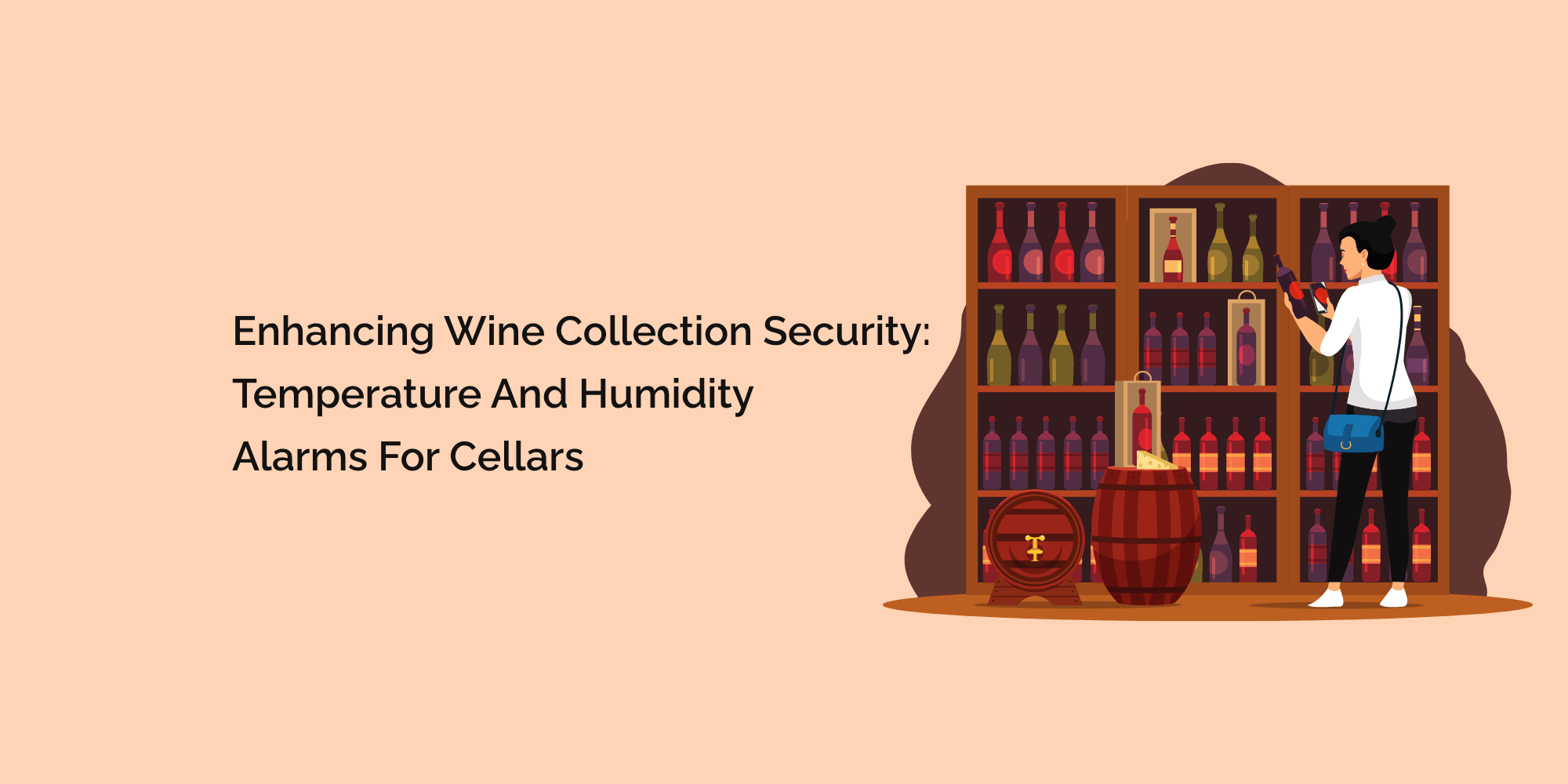For wine collectors, the security and protection of their valuable wine collections are paramount. While physical security measures are commonly implemented, such as locks and surveillance systems, temperature and humidity alarms' role in safeguarding wine collections must be addressed. This blog will explore the importance of using temperature and humidity alarms for wine cellar security. We will discuss how temperature and humidity fluctuations can jeopardize wine quality and value and highlight the key benefits of using alarms to mitigate these risks. By implementing temperature and humidity alarms in your wine cellar, you can enhance the security of your collection, preserve wine quality, and ensure the long-term value of your investments.
Understanding the Risks to Wine Collection Security
We will discuss wine collections' risks regarding temperature and humidity fluctuations. Fluctuations can lead to premature aging, flavor degradation, and even irreversible damage to wines. Additionally, we will highlight how these risks can impact the value and desirability of a wine collection, emphasizing the need for proactive security measures.
The Role of Temperature and Humidity Alarms in Wine Cellar Security
Temperature and humidity alarms serve as early warning systems, alerting cellar owners to deviations from the optimal conditions. We will explain how these alarms help maintain stable and controlled environments, ensuring the preservation of wine quality and protecting the investment value of the collection. By receiving real-time alerts, cellar owners can take immediate action to rectify any issues and prevent long-term damage.
Benefits of Using Temperature and Humidity Alarms for Wine Collection Security
We will explore the numerous benefits of using temperature and humidity alarms for wine cellar security. These benefits include continuous monitoring, timely alerts, data logging capabilities, and remote access features. We will also highlight how these alarms can be integrated with existing security systems to provide a comprehensive approach to wine collection protection.
Selecting the Right Temperature and Humidity Alarm System
The appropriate temperature and humidity alarm system is crucial for adequate wine collection security. We will discuss factors to consider when selecting an alarm system, such as sensor accuracy, reliability, compatibility with existing cellar infrastructure, ease of use, and customization options. Cellar owners can ensure optimal performance and reliability by choosing the right design.
Installation and Sensor Placement
Proper installation and sensor placement are critical to the effectiveness of temperature and humidity alarms. We will provide guidelines on the installation process, including sensor placement recommendations, avoiding areas with direct light or heat sources, and ensuring sensors are positioned at the appropriate height for accurate readings. Following these guidelines will help maximize the alarm system's efficiency and accuracy.
Setting Up Alert Notifications and Response Protocols
We will discuss the importance of setting up alert notifications and response protocols for temperature and humidity alarms. This includes configuring the alarm system to send messages via email, SMS, or mobile app and establishing a clear plan for addressing alerts. Prompt response to alarms is crucial for minimizing potential damage to the wine collection.
Integration with Security Systems
We will explore how temperature and humidity alarms can be integrated with existing security systems in wine cellars. The integration allows for a centralized monitoring approach, where alerts from temperature and humidity alarms can be managed alongside other security notifications. This ensures comprehensive wine collection security and streamlines response procedures.
Regular Maintenance and Calibration
Regular maintenance and calibration of temperature and humidity alarm systems are essential for optimal performance. We will discuss the importance of following manufacturer recommendations for sensor calibration, conducting periodic system checks, and addressing maintenance requirements. Regular maintenance helps maintain the alarm system's accuracy and reliability, ensuring the wine collection's ongoing security.
Educating Staff and Training
Properly educating staff members and providing training on wine collection security protocols is crucial. We will emphasize the importance of training cellar staff on the significance of temperature and humidity control, the role of alarm systems, and the appropriate response to alerts. Educated and well-informed staff contribute to the overall security and protection of the wine collection.
Ongoing Monitoring and Improvement
Continuous monitoring and improvement are vital to maintaining wine collection security. We will discuss the importance of regularly reviewing alarm system data, analyzing trends, and making necessary adjustments to enhance the cellar's security measures. Additionally, we will emphasize the need to stay informed about industry advancements and emerging technologies for wine cellar security.
Certainly! Here are some frequently asked questions (FAQs) about temperature and humidity alarms for wine cellar security:
Why do I need temperature and humidity alarms for my wine cellar?
Temperature and humidity fluctuations pose significant risks to wine quality and value. Alarms provide real-time monitoring and alerts, allowing cellar owners to take immediate action to rectify any issues. By maintaining stable and controlled conditions, alarms help enhance wine collection security and preserve the long-term value of the wines.
How do temperature and humidity alarms work in wine cellars?
Temperature and humidity alarms utilize sensors in the wine cellar to monitor environmental conditions. These sensors transmit data to a central monitoring unit or software. If the temperature or humidity deviates from the desired range, the alarm system triggers alerts through various means, such as email notifications, SMS, or mobile app notifications.
What are the risks of temperature and humidity fluctuations in wine cellars?
Temperature and humidity fluctuations can lead to premature aging, flavor deterioration, and even irreversible wine damage. These fluctuations can negatively impact the overall quality and value of the wine collection.
Conclusion
Temperature and humidity alarms play a vital role in enhancing wine collection security. By monitoring and mitigating temperature and humidity fluctuations, these alarms help preserve wine quality, protect investment value, and ensure the long-term enjoyment of your collection. By implementing the best practices outlined in this blog, including selecting the right alarm system, proper installation, response protocols, and regular maintenance, you can create a secure environment for your wine cellar. Remember, investing in temperature and humidity alarms is an investment in the security and longevity of your cherished wine collection.








